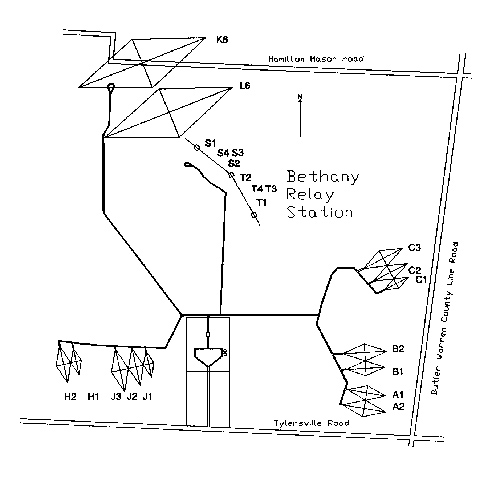 |
Antenna farm layout for VOA, Bethany, Ohio
 |
|
CURTAIN ANTENNAS 250 KW |
BEAM CENTER |
AREA COVERED |
|---|---|---|
| S1, S2, S3, S4 | 57 Degrees | S. Europe, N. Africa |
| T1, T2, T3, T4 | 74 Degrees | West & Central Africa |
|
RHOMBIC ANTENNAS 250 KW |
BEAM CENTER |
AREA COVERED |
| A1, A2 | 100 Degrees | South Africa |
| B1, B2 | 87 Degrees | West & Central Africa |
| C1, C2, C3 | 62 Degrees | Spain & North Africa |
| H1, H2, J1, J2, J3 | 168 Degrees | Caribbean & South America |
| K6, L6 | 66 Degrees | Spain & North Africa |
| K6, L6 (Reversed) | 246 Degrees | N. Mexico, New Zealand |